A French Cape Gun
feature By: Helmut W. Sakschek | August, 21

So, what is a Cape Gun? According to Hallowell & Co., a dealer in fine sporting guns, the definition is as follows:

“Cape Gun - A two-barreled, side-by-side, shoulder-fired gun having one smoothbore shotgun barrel, and one rifled barrel.”
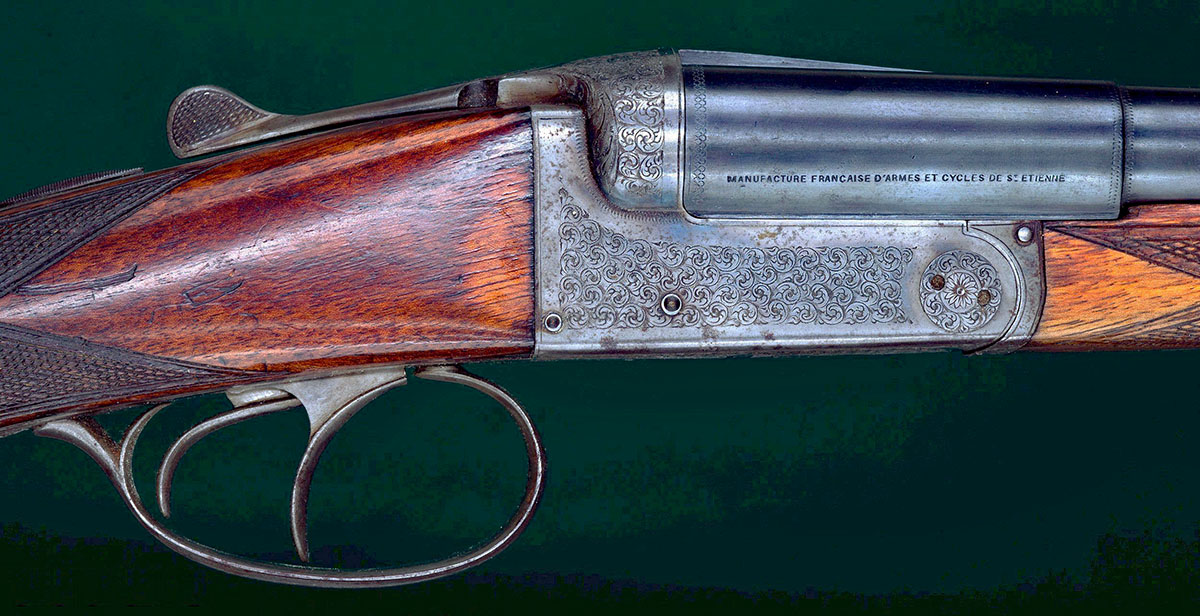
I’ve been collecting Cape Guns for a number of years, and now have five in my collection; two are British and three are European. The combinations of gauge and calibers include a German Burgsmuller in 11.15x65R/16 gauge, a German Meffert Innman in 9.3x72R/16 gauge, an Austrian Franz Thiele in 8x72R/16 gauge, a British Cogswell & Harrison in .375 Nitro Express 2½-inch/16 gauge, and now, this French Manufrance in 16 gauge (rifled)/16 gauge (smooth). Interestingly, British Cape Guns are shotgun/rifle combinations, with the shotgun barrel on the right and the rifle barrel on the left, while European Cape Guns are just the opposite — rifle/shotgun combinations with the rifle barrel on the right and the shotgun barrel on the left. No one seems to know why this is, but it is so. All have double triggers, but many of the European guns have “set triggers” for the rifle barrel, which makes it possible to mechanically “set” the trigger to make it into a hair-trigger, for more precise aiming.

When this French gun appeared for sale on the Hallowell web page, I was intrigued because this one was different from the common definition of a Cape Gun. Rather than being a rifle/shotgun combination, it was a shotgun/shotgun combination with the right barrel being fully rifled. The Hallowell advertisement listed it as follows; “Manufrance Robust No. 32ES Boxlock Ejector Cape Gun. Right barrel 16-gauge, fully rifled for shot or ball, left barrel smoothbore for shot.”
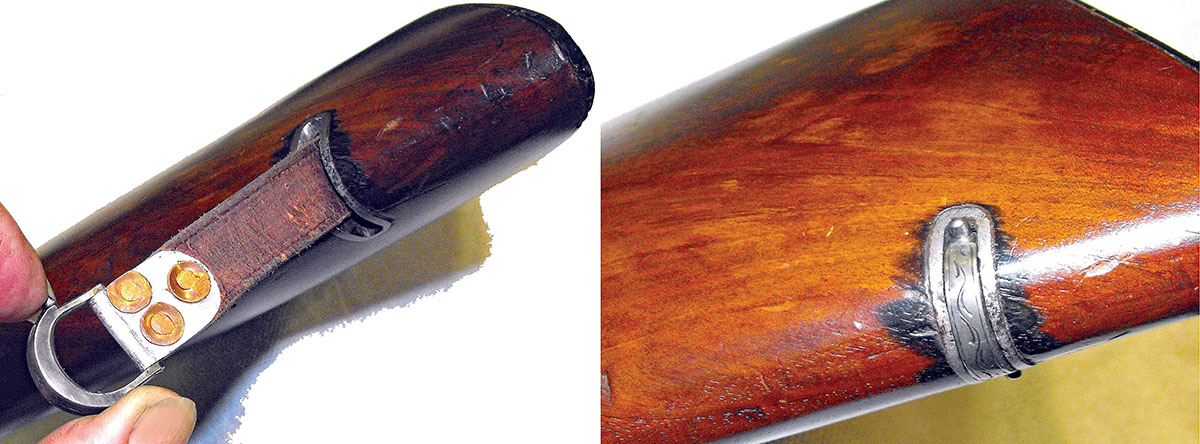
Although skeptical, I was very intrigued by the nontypical configuration, so I decided to buy it and bring it home to Wisconsin. Turns out, I’m glad I did. This one is a 1930 vintage ejector gun of very high quality with very nice engraving and lots of original remaining blue and case-color finish. Although it is French made, it has a lot of English features.
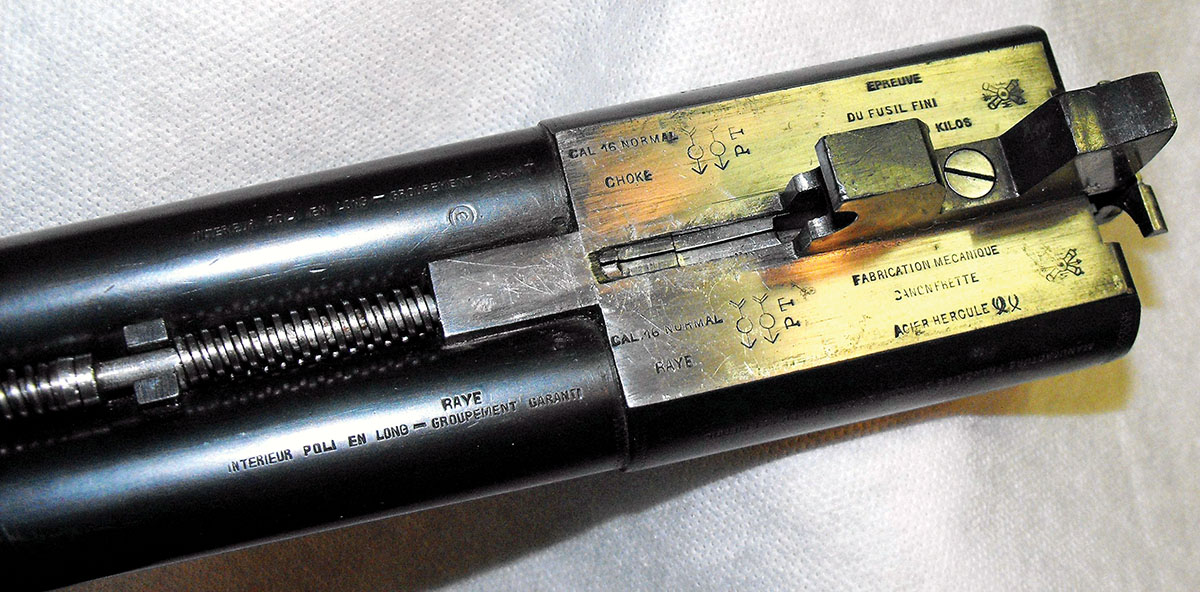
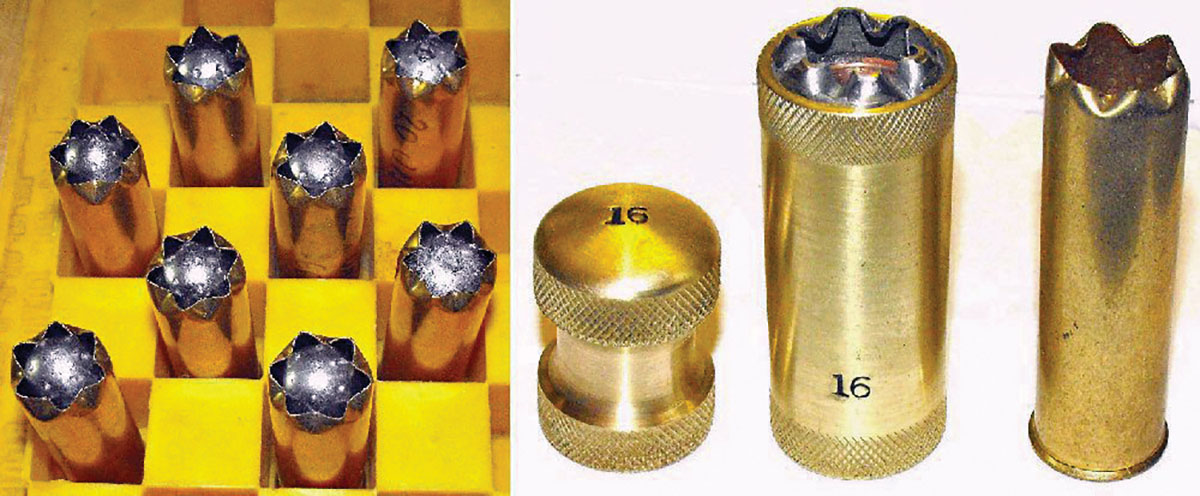
It also has a unique leather sling feature that is very unusual. The sling has a spring windup system that retracts it into the stock for storage, out of the way when not carrying the gun into the field.
Because I had never seen such a gun, I went to the internet forums to inquire for information about it, its markings and all the proofmarks. I soon learned what all the markings meant and found that I had acquired a very rare gun. The rifled right barrel has a dual purpose. It is made without choke, with full rifling that acted as a “spreader barrel,” which rapidly dispersed the shot pattern for very close shooting. In addition, the rifling was also intended to allow the firing of a “ball” (bullet or slug) for use on bigger game. The proper term for this gun, I guess, would be to call it a “ball and shot gun,” rather than a Cape Gun. Tomatoes or tamatoes?
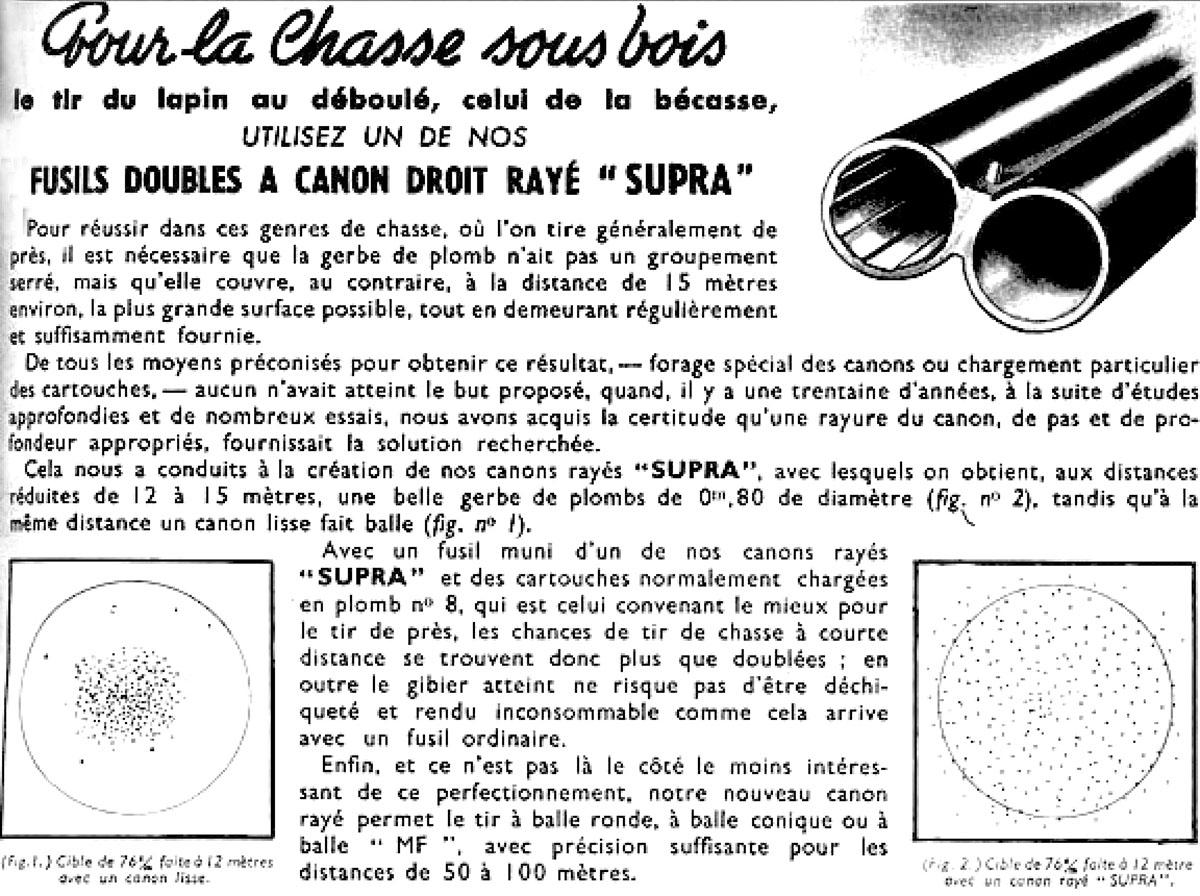
From the forum inquiries, one of the members found a French publication (translated) that commented as follows;
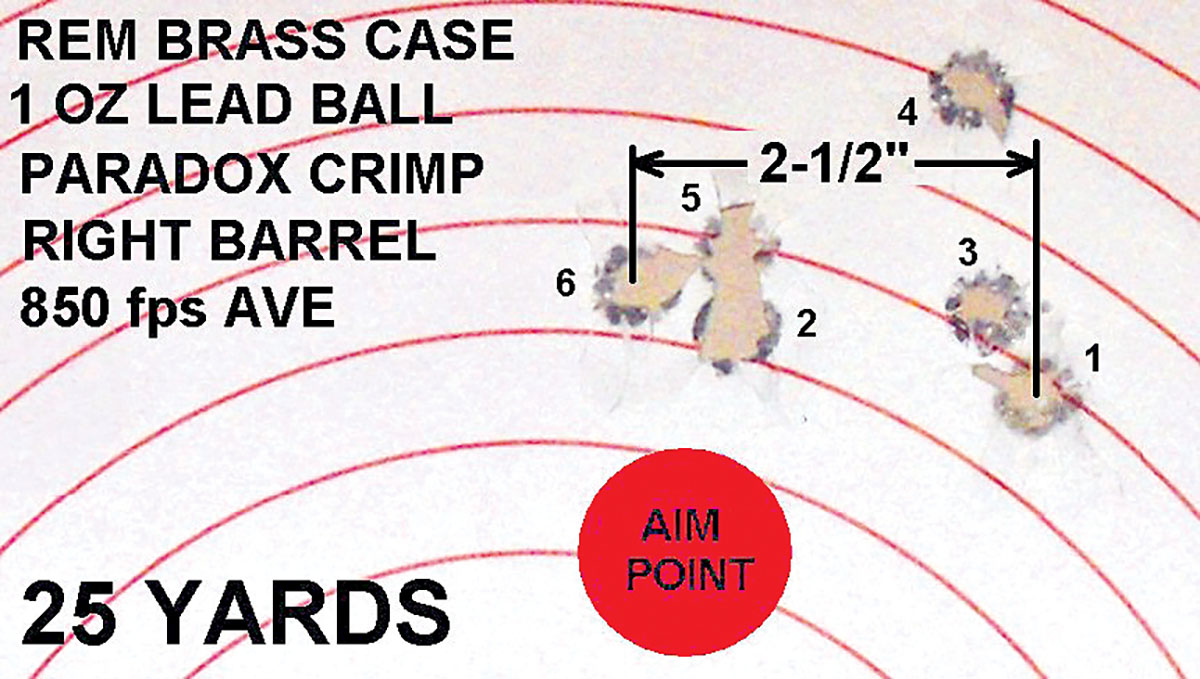
“...it is worth noting that certain barrels, meant for firing ball, were rifled from the exit of the chamber, along the entire length of the barrel. What happiness for a collector to come upon such a rarity...”
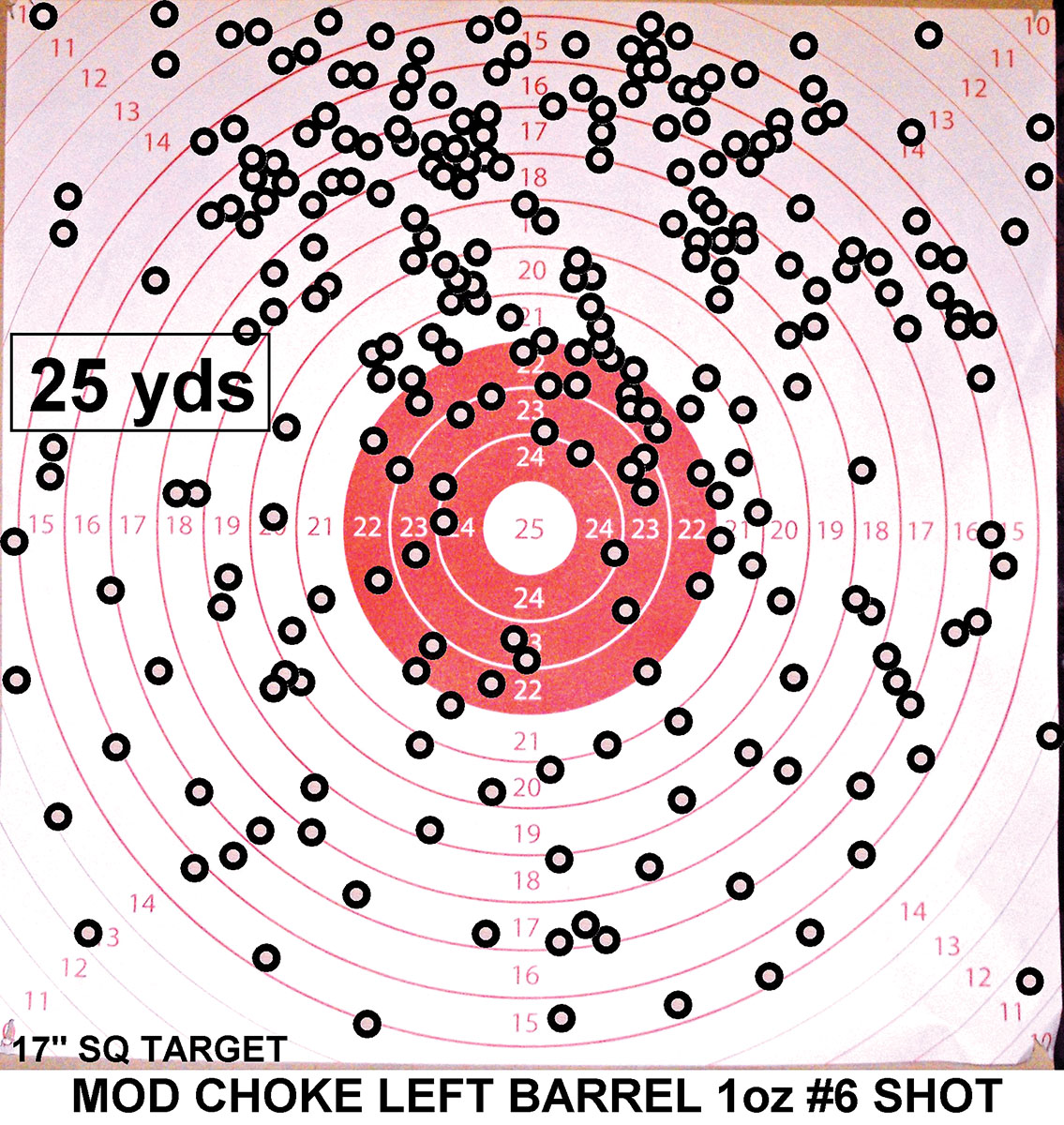
He also shared a French catalog listing describing its use. Unfortunately, it’s in French, but you get the idea from the pictures. The upper picture shows the rifled right barrel, and it also shows the two shotgun patterns at 12 meters; the rifled right barrel shows the “spreader” pattern, and the choked left barrel shows “modified” pattern. The test at the bottom mentions the use of a ball out to 50 and 100 meters.
Although this gun is 1930s vintage, much of the ammunition of that time would likely have been black powder, especially when shooting ball. So, to test this gun, I prepared Remington brass cases loaded with 3Fg powder, two over-powder hard card wads, followed by a ¼-inch thick felt wad, and a 1 ounce, 16-gauge soft lead ball. I used a special Paradox Crimping tool to fold the case mouth, which centered the ball within the case and slightly pushed it into the felt wad. This is the type of crimp that was used on the original Paradox shells loaded by Holland & Holland in the old days. In addition to good performance, I also like the looks of the traditional loaded ammunition. It’s a head-turner at the range.
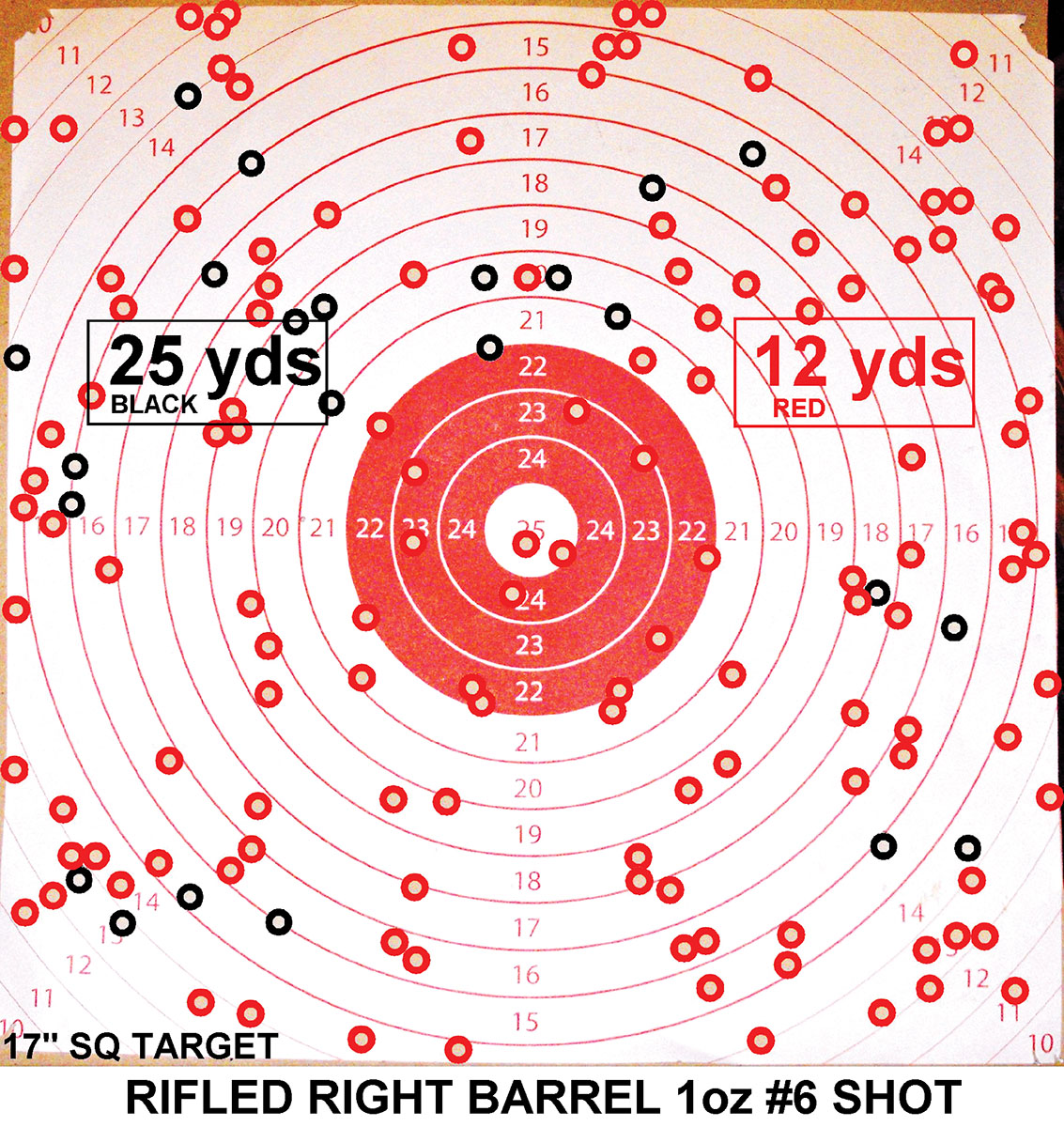
When testing the shotgun patterns, results were interesting to say the least. Initial testing was done at 25 yards with Fiocci 16 gauge, 1 ounce #6 field loads. The modified choked left barrel did just fine (black circles).
However, the rifled right barrel showed a mediocre pattern – only 23 pellets on paper, (black circles) with a big void in the center. I then recalled that the patterns shown in the old French catalog were shot at 12 meters. With this in mind, I moved closer to the target, to about 12 yards, which was nearly the same distance as the French testing. The picture shows the 12-yard pattern (red circles) superimposed on top of the 25-yard pattern.
Amazingly, the “spreader” feature of the rifled barrel proved to be successful; it performed exactly as intended. A flushing grouse, darting woodcock or racetrack rabbit at close range would all be stew by nightfall.
Whether you call this a “Cape Gun” or a “ball and shot gun,” it is truly an all-purpose firearm for everything from small birds to large bear.



